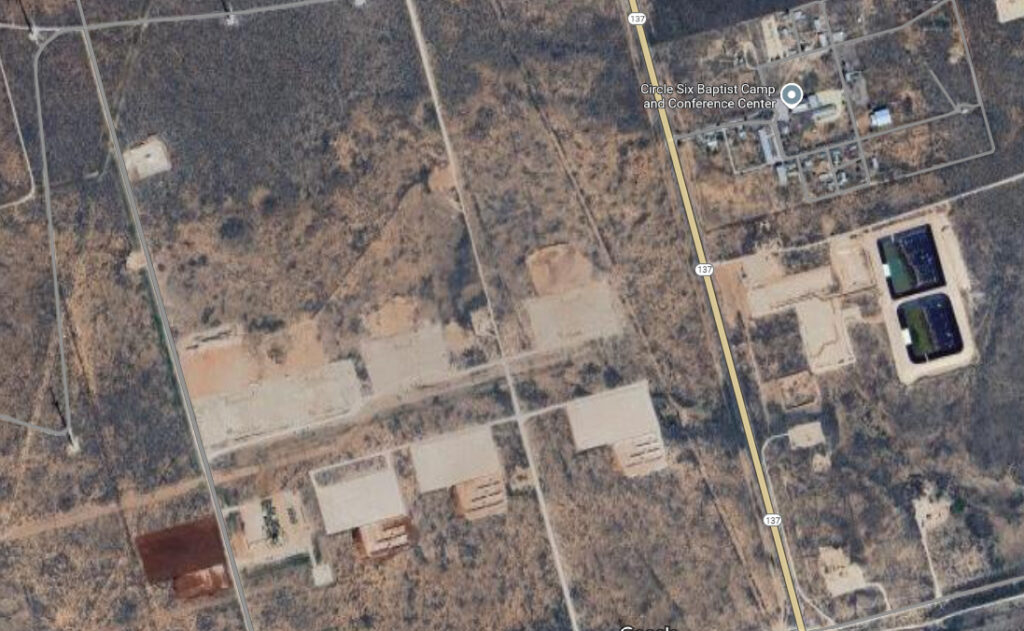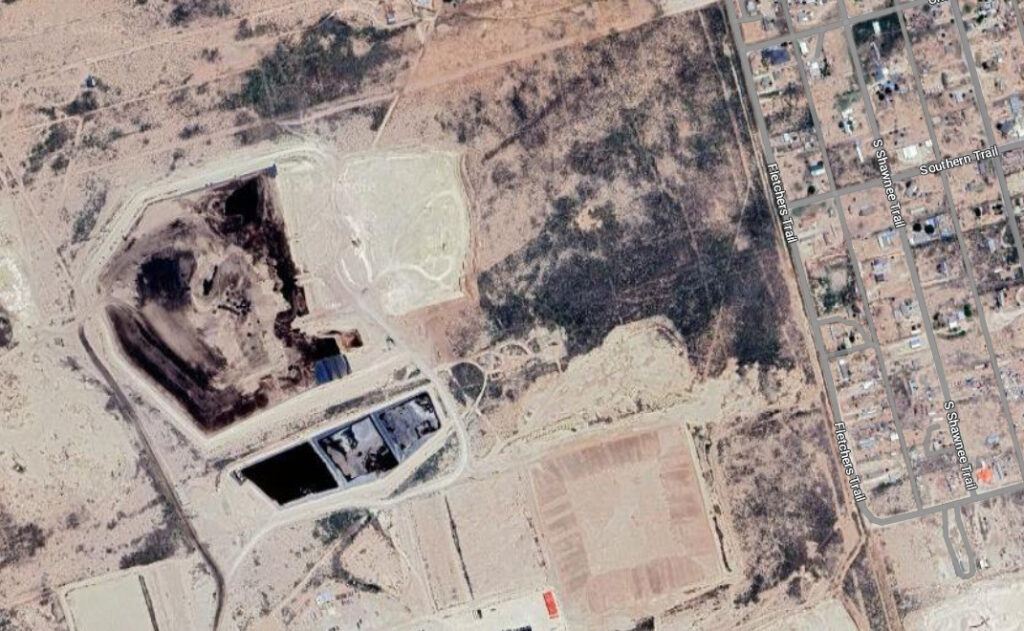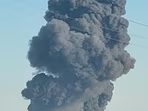Debate Flares Over Texas’ Proposed Oil and Gas Waste Rule
Texas is inching closer to adopting revised oil and gas waste management rules for the first time in four decades.
The Railroad Commission of Texas announced the draft rule at its Aug. 15 meeting and is now soliciting public comment. The rule regulates a range of disposal sites for oil and gas drilling wastes, from pits dug next to drilling rigs to large commercial facilities managing toxic waste from numerous drillers. Waste streams that fall under the rule include drilling mud, sludge, cuttings and produced water.
The rule also aims to encourage more recycling of the drilling wastewater, which can be five to eight times saltier than ocean water and, like other oilfield waste, is often laced with fracking chemicals, hazardous compounds such as arsenic, benzene and toluene.
The existing waste rule was adopted in 1984, long before fracking revolutionized the oil and gas industry. Fracking has increased the volume of oilfield waste and changed its composition. In Texas, waste pits have been linked to at least six cases of groundwater contamination and hundreds of violations of state rules.
Explore the latest news about what’s at stake for the climate during this election season.
While the need to modernize the Railroad Commission’s rules is clear, the process has proved contentious. A task force with members of the oil industry and consultants met for two years to provide recommendations before the Railroad Commission released an informal draft to the public in October 2023. That round of public comments informed the updated draft released last month.
Commission Shift, a nonprofit organization focused on reforming oil and gas oversight in Texas, applauded some provisions of the latest draft, such as requiring operators to register waste pits with regulators. But the organization warned that the proposal does not provide enough protections for groundwater.
Karr Ingham, president of the Texas Alliance of Energy Producers, said his group raised concerns that provisions in the informal draft would be “unworkable” and too costly for smaller independent oil and gas companies.
“I believe a number of the changes that were made do address those concerns,” Ingham said in an interview. “Yes, we’re much more comfortable with the current draft than that initial draft.”
More feedback on the draft rule will be aired when the Railroad Commission hosts a public hearing on Sept. 5 at its offices in Austin and a virtual hearing on Sept. 6. The agency is accepting written comments until Sept. 30. The Railroad Commission proposes that the new regulation, which would replace Statewide Rule 8, go into effect July 1, 2025.
“The proposed rules include a combination of strategies to protect groundwater from pollution, including engineering and design controls, groundwater monitoring, and closure standards,” Railroad Commission spokesperson Patty Ramon said in an email. “In addition, the design and operational standards become more strict as waste volume increases, and also considers factors such as time in the ground, and proximity to groundwater.”
Rule Covers Several Oil and Gas Waste Streams
While drilling an oil or gas well, oily waste, known as mud and cuttings, return to the surface. The operator digs an earthen pit alongside the rig to dispose of this waste. The pit remains open while the well is drilled and then closed once the well is complete, permanently burying the waste underground.
When these pits meet certain Railroad Commission requirements, they are automatically permitted. These are known as authorized pits or reserve pits. Other types of commercial waste pits require an individual permit under the draft rule.
The draft rule only requires liners in reserve pits when groundwater is within 50 feet of the bottom of the pit. These pits cannot be in a 100-year floodplain but otherwise have no setback requirements from houses and water wells. There is no limit on how close the bottom of the reserve pit can be to the underlying groundwater and no groundwater monitoring required. However, for the first time, operators will be required to register the location of their reserve pits with the Railroad Commission.

Commercial pits have more stringent requirements for liners, groundwater monitoring and setbacks from water wells in the draft rule.
Fracking has increased the volume of drilling waste, according to law firm Baker Botts. The contents of the waste have also changed. While operators originally used water-based drilling mud, many now use oil-based mud to drill horizontal wells for fracking. The cuttings that come to the surface can contain diesel fuel and other chemicals. Drilling waste, despite containing harmful chemicals, is largely exempt from federal regulations for hazardous waste under the Resource Conservation and Recovery Act.
A separate section of the draft rule covers commercial facilities that handle waste from drilling companies. The rule also governs commercial recycling facilities that process the waste for reuse, and produced water recycling facilities.
Oil and gas companies are not required to report the volume of produced water generated in the state. But a 2022 report estimated that in the Permian Basin alone, 3.9 billion barrels, or more than 168 billion gallons, of produced water is generated every year.
While the draft rule imposes stricter requirements than the pre-existing rule, it falls short of how other states regulate drilling waste. In North Dakota, for example, open pits for liquid waste—including drilling mud and produced water—are prohibited except under specific circumstances with the regulator’s approval. New Mexico updated its waste rules in 2008 and banned unlined pits altogether.
Drilling Waste Poses Groundwater Threat
Virginia Palacios saw firsthand the impacts of oilfield waste when the shale boom took off in her hometown of Laredo.
At the Texas Groundwater Summit in San Antonio in August, Palacios, now executive director of Commission Shift, remembered open-top trucks sloshing drilling waste onto the roads in Laredo. She recounted seeing a waste pit at her family’s ranch that had an oily sheen even though the company assured them it contained only water.
Most landowners across Texas do not own the minerals under their land. The oil and gas companies that hold these mineral rights enter surface-use agreements with the landowners. These leases can include provisions for waste pits.
“We can’t rely on mineral owners to just get a good lease every time,” Palacios said at the summit. “We’ve got to have good rules that apply across the board everywhere, so that we can ensure that groundwater is safe.”
Palacios is concerned that the draft does not require operators to notify landowners when they dig authorized pits on their land.
“We need to do better by the landowners to let them know what is going to happen and to allow them to give informed advice,” Palacios said.

Pits that are not properly constructed or leach into the soil can contaminate groundwater. According to the commission’s online database, the agency issued 712 violations of water contamination rules since 2015. The commission did not provide clarification about how many of these violations occurred at waste pits. The commission has on record six active cases of groundwater contamination caused by waste pits and one case caused by a commercial waste facility, according to the state’s groundwater protection report.
In addition to nonprofit organizations, some companies have doubts about the rule. Gabriel Rio, CEO of the waste management firm Milestone Environmental Services, told the Midland Reporter-Telegram that the draft rule is not sufficient to protect groundwater. “This very much falls short of what the industry is already doing,” he said.
Milestone Environmental Services declined to comment for this story.
Oil and Gas Industry Provided Early Recommendations
Jim Wright built on his career in oilfield waste management to win a seat on the Railroad Commission in 2020. Updating the waste rule was one of his priorities as commissioner. His staff formed a regulatory task force to provide recommendations for a revised rule.
The Railroad Commission published the informal draft after receiving this industry feedback.
Commission Shift’s Palacios said she is concerned that the waste management companies subject to the rule had private meetings with regulators before the Railroad Commission shared the informal draft with the public.
“I don’t know how industry can have undue influence on a rule which will undoubtedly be strengthened, especially when the alternative is to do nothing, keep the current rule, and maintain the status quo,” Commissioner Wright’s spokesperson Aaron Krejci said.
Several waste management professionals backed the protective measures during the informal comment period. Landowners and residents also submitted comments in support of the new regulations.
Meanwhile, comments from numerous oil and gas operators pushed back on stricter requirements for reserve pits. The Texas Alliance of Energy Producers sought an exception for liner and groundwater monitoring requirements for reserve pits that are open for less than 18 months before the waste is buried.
Ingham, the Alliance president, said the organization had further meetings with RRC staff and commissioners following the informal comment period. (Palacios confirmed that Commission Shift was also able to meet with agency staff).
Ingham said that these meetings allow industry to provide information that RRC staff may not have at their disposal. “They are willing to take those meetings and listen to us. This is not remotely uncommon,” he said.
The latest draft rule includes an option for operators to request exceptions to requirements for reserve pits.
Judy Stark, president of the Panhandle Producers & Royalty Owners Association, said in an interview that a “one size fits all rule” doesn’t make sense for her region.
Stark said that notifying landowners of the locations of pits could create costly delays for drillers. “You can’t wait if somebody is on vacation or something like that, with a $100,000 a day rig out there,” she said.
“They used common sense on the draft,” Stark said. “It’s still in its draft stage so I can’t say where it’s going to end up.”
Residents Feel Impacts of Waste Facilities
Not everyone feels their concerns were heard in the rulemaking process.
Tara Jones lives about a mile from the Blackhorn Environmental Services stationary waste facility in Orange Grove. When odors from the facility permeated Jones’ home, she asked regulators to investigate.
She appealed to the Texas Commission on Environmental Quality, which regulates air emissions from stationary facilities, along with the Railroad Commission and her elected officials. She said stationary waste facilities impact people far beyond their fence lines.
“I am one mile away and there’s only one property owner between us,” she said. “But when it comes to stuff in the air, it doesn’t really matter.”
Jones is skeptical that the Railroad Commission takes public comments into consideration.
“I feel if you kick and scream loud enough, sometimes they do,” she said. “But will it change their mind? I don’t know. I don’t really think so.”
In response to a question about how the Railroad Commission engages landowners and people who live near stationary waste facilities, the agency spokesperson said only that they use “various sources of information and expertise,” including public comments.
“As with any proposed rule, staff will review and incorporate comments,” Ramon said.
“This is a massive overhaul of extremely important groundwater protection rules.”
Palacios said that the Railroad Commission should hold public hearings near waste facilities, not only in Austin. She pointed out that Reeves County in the Permian Basin, which has the most commercial waste pits in the state, is a seven-hour drive from Austin.
Commission Shift is urging the Railroad Commission to extend the public comment period on the more than 300-page draft document.
“This is a massive overhaul of extremely important groundwater protection rules,” she said. “We’re asking the commission to extend the comment period to 90 days to allow the public to meaningfully participate in this rulemaking.”
Asked whether the commission is considering extending the comment period or holding meetings outside Austin, the agency spokesperson only said that residents in other parts of the state can join the virtual hearing.
About This Story
Perhaps you noticed: This story, like all the news we publish, is free to read. That’s because Inside Climate News is a 501c3 nonprofit organization. We do not charge a subscription fee, lock our news behind a paywall, or clutter our website with ads. We make our news on climate and the environment freely available to you and anyone who wants it.
That’s not all. We also share our news for free with scores of other media organizations around the country. Many of them can’t afford to do environmental journalism of their own. We’ve built bureaus from coast to coast to report local stories, collaborate with local newsrooms and co-publish articles so that this vital work is shared as widely as possible.
Two of us launched ICN in 2007. Six years later we earned a Pulitzer Prize for National Reporting, and now we run the oldest and largest dedicated climate newsroom in the nation. We tell the story in all its complexity. We hold polluters accountable. We expose environmental injustice. We debunk misinformation. We scrutinize solutions and inspire action.
Donations from readers like you fund every aspect of what we do. If you don’t already, will you support our ongoing work, our reporting on the biggest crisis facing our planet, and help us reach even more readers in more places?
Please take a moment to make a tax-deductible donation. Every one of them makes a difference.
Thank you,
David Sassoon
Founder and Publisher
Vernon Loeb
Executive Editor
Share this article
Disclaimer: The copyright of this article belongs to the original author. Reposting this article is solely for the purpose of information dissemination and does not constitute any investment advice. If there is any infringement, please contact us immediately. We will make corrections or deletions as necessary. Thank you.
Title:Debate Flares Over Texas’ Proposed Oil and Gas Waste Rule
Url:https://www.investsfocus.com








